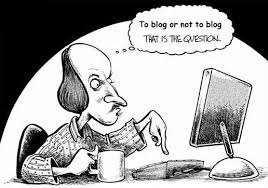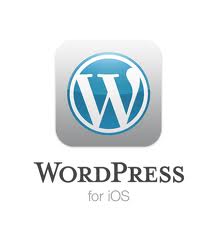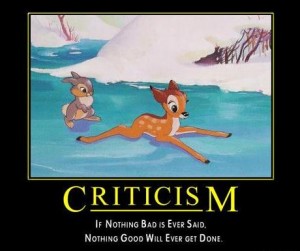Create your own mind maps at MindMeister
10 Minutes of Fame
Check out Ms. Wiffen’s English 8 Blog!
WordPress tutorial here.
1. Uncle Jesse
2. Feelings of inadequacy and a breakthrough
3. Determination followed by “My this is public, isn’t it?” followed by determination: the journey of a beginning blogger
4. Girly theme…a mistake?
5. Explanation: Post vs. Page
5. Purpose: daily updates, homework, communication.
7. Mobility
8. Questions, comments, and constructive criticism. (I can take it, people)
Blog 3: Me, Myself and I
I’ll be honest and own up to the fact that I haven’t finished Will Richardson’s wonderfully thought provoking and expertly curated collection of questions, critiques, and possibilities for the integration of real world literacies into the modern curriculum and classroom. My Kindle app tells me that I’m about 30% of the way through. And, although, as I hope my previous description of Richardson’s work suggests, I am enjoying, learning and growing from reading Why Schools?, I am also feeling overwhelmed with this course and all the resources, ideas, and inspirations that are resulting from our in-class discussions and inquiry and my own inquiry and synthesis. When I feel overwhelmed, I tend to shut down. It’s a protective mechanism that allows me to slowly and carefully decide where my priorities are and need to be in any given situation and to both figuratively and perhaps physically place them in an order of importance that allows me to systematically work through each task. All this is to say that, as this first week of class wraps up, I am feeling that I am more able to assess and organize my priorities, and even more importantly, identify what I learned, how it connects to what I already know, what path of inquiry I would like to take for my final culminating project, and which resources, topics, etc. I would like to explore and implement in my practice in the future.
This week’s discussions and paths of inquiry have taught me that as a teacher and a professional I must be connected – connected through technology, through social media (e.g. twitter, etc.), and through my own inquiry, research, and exploration. If I am going to help my students develop these new forms of literacy (e.g. digital, media, visual, social, information, etc.), I need to be “fluent” in these new forms of communication myself. And, in order to teach my students the skills they will need to be successful, I must further develop my own skills. This week of class impressed upon me the need for me, as the teacher and the professional, to spend time reading about, exploring, and experimenting with the possibilities of ICT in my classroom. It is my professional responsibility and my ethical duty to push forward, so I can prepare my students for the world they will enter. And, if I am going to be a leader in my school and professional communities, I need to be not only looking forward but actively moving forward with regards to ICT – resources, devices, and programs. I need to adapt.
And, in the short term, I need to finish Will Richardson’s book, comment on three of my colleague’s blog posts, and sit and think about where my interest, passion, focus lies in regards to the final project.
Blog 2: Mastering Modern Literacies
In his eBook, Why School?, Will Richardson speaks directly about the recently minted “modern literacies” and advocates for an education system that promotes, teaches, and recognizes the importance of these new forms of literacy (p. 192). Simply put, he posits: “Why do we need to master these modern literacies? Because we now live in a world of abundance, where if we and our kids can’t do that stuff, we and they won’t be as successful a those who can” (Richardson, p.192). And, he’s right. If we want our students to be successful in this rapidly changing world of here today and gone tomorrow technologies, we have to teach them to be literate in these ways, so they have a foundation upon which to build, the knowledge, skills, and confidence to adapt where necessary. In other words, if at first they don’t succeed, they need to learn how to try, try again – to problem solve and learn.
While doing research in-class yesterday on this the topic, I came across a lot of ministry resources dedicated to promoting and practically implementing technology and information literacy in the classroom. Among these were the government’s Education Plan, Digital Literacy Framework, and Integration Performance Standards. I was surprised to see them because I have never seen them before. I couldn’t help but wonder: if the ministry and the school district were really serious about implementing these strategies, shouldn’t they be promoting these resources to teachers? I personally do try to integrate new technologies into my practice, but the inaccessibility of computers makes it very difficult to carry out any unit of study that requires more than perhaps a class or two in the computer lab. And, so, again I wonder: if the ministry and school district were really serious about implementing these strategies, would they not provide direction and funding for school’s to have up-to-date technology? There seems to be a major disconnect. How can our students develop these literacies, let alone be connected, if the WiFi doesn’t work properly, and the computers are too slow, and their teacher can’t get them into the lab for more than a class anyhow?
Richardson, Will. Why School?: How Education Must Change When Learning and Information Are Everywhere . Kindle Edition ed. Ted Conferences, 2012. eBook.
Blog Post 1: Connecting Through Particpation
In my search for information about the connected self, I stumbled across an article that very nicely summed up the implications and practicalities of effectively using new technologies in the classroom and the responsibilities of the educator in not only teaching a new and valuable skill set but also in supporting and encouraging a positive culture of involvement and engagement in what has become a completely new classroom environment with the advent of new technologies. In this very insightful article published by the MacArthur Foundation in Chicago, IL, Henry Jenkins, Director of the Comparative Media Studies Program at the Massachusetts Institute of Technology, discusses both the theoretical and practical applications of establishing a participatory culture in the classroom in relation to and as a result of new media. In other words, “We are moving away from a world in which some produce and many consume media, toward one in which everyone has a more active stake in the culture that is produced” (p. 10). Participatory culture is described as a culture:
1.With relatively low barriers to artistic expression and civic engagement
2.With strong support for creating and sharing one’s creations with others
3.With some type of informal mentorship whereby what is known by the most experienced is passed along to novices
4.Where members believe that their contributions matter
5.Where members feel some degree of social connection with one another (at the least they care what other people think about what they have created).
(Jenkins, p. 7)
This concept or ideal of a participatory culture relates directly to the cultural dimensions of the connected self. As I see it, that is the self that feels connected to and valued by those they are connected to in the classroom community to which they belong and in which they meaningful participate. Online participatory culture is the foundation of, inspiration for, practical reality of the connected self.
Jenkins, Henry. “Confronting the Challenges of Participatory Culture: Media Education for the 21stCentury.” The John D. and Catherine T. MacArthur Foundation, n.d. Web. 4 July 2013. <http://fall2010compositions.pbworks.com/f/JENKINS_WHITE_PAPER.pdf>.
Questionnaire
1.What policies govern your uses of ICT in your school setting?
There are no direct policies that I am or have been made aware of, aside from the fact that facebook, personal email, and gaming are banned on school computers, but there are definitely constraints on the use of ICT in my school setting. Most times, the computer labs and/or library computers must be booked well in advance. Once you are in the lab, it often takes considerable time for all the students to log in to the network.
2.What digital technological resources do you have available for teaching and learning in your school setting?
Aside from a large selection of eBooks, the VSB is subscribed to various online resources, such as The Vancouver Sun, World Book Encyclopaedia, and various academic journal collections. On top of which, the school computers are outfitted with plenty of different programs should teachers wish to engage their class in more technologically advanced processes like website building, etc.
3. Please provide an example of an exemplary use of digital technologies for teaching and learning that you have observed or experienced personally.
As a TOC, I was really impressed by a few teachers who put their daily plan for each class up on their blog. When I came in for the day, I simply logged on to the teacher’s blog as a visitor and went about teaching their day plan. Students could check-in before class to see what they would be doing or after class to review or get updated on what they had missed, and the teachers had a clear and detailed record of what they had taught each day. It’s a fantastic way to connect students and to keep a record of your teaching. I was able to do the same thing at the beginning of this year with my grade 8 English class. I would most definitely use this technology again, and I look forward to finding ways to integrate my students more fully in the process.
4.Please provide an example of a problematic use of digital technologies for teaching and learning that you have observed or experienced personally.
In my experience, it is difficult for students to identify the need for and make proper use of citations. I have observed far too many student projects (as a TOC) for which students were not required to provide a Works Cited page. As a result of the format (Power Point, etc.), students did not realize that they should use quotations around any text that borrowed from another source or identify the source of their information. I was quite literally squirming in my seat as grade 12s gave presentations about early 20th century poets using slides upon Power Point slides of uncited information that was quite clearly taken from other sources. Digital technologies make it too easy to cut and paste information from online sources without giving proper credit to the source.
5.Please provide a brief history of how you learned to use digital technologies (personally and professionally).
I have two words, trial and error. In university, the only new technology lesson I was given was a cursory lesson in basic website design for a particularly forward thinking English Professor. Other than that, I simply fiddled until I got it right. That is how I learned to use footnotes/endnotes, format my essays correctly, and access the digital resources available through the university library website (with a little help from the librarians). But, more often than not, I just had to figure things out for myself. And, as I am a very inquisitive and determined person, I developed the basic skills and strategies I would need to successfully fudge my way through just about anything. Now, I’m quite proficient with digital technologies, and with enough time and energy, I can figure out just about anything.
6.How would you rate your digital technological proficiency? 0 = low level of proficiency! 10 = high level of proficiency? Why did you give yourself this rating?
I would rate myself an 8. Because no matter how much I know, and no matter how confident I am that I can figure things out eventually, there is so much out there that I know nothing about! The digital landscape is truly a brave new world, and I very much look forward to exploring it.
7.What do you hope to accomplish in this course?
I look forward to gaining practical knowledge about how to make use of digital technologies in my classroom and future library program. If we as librarians are going to lead the charge into the future, we need as much information and as many weapons in our figurative armoury as possible. I am eager to continue my professional development through the discussion and use of digital technologies.




